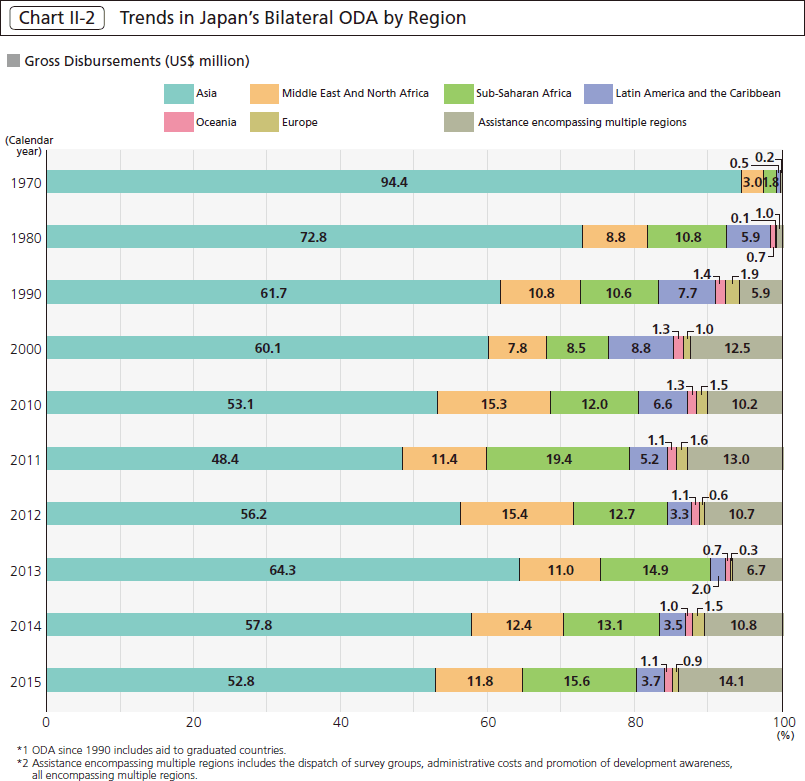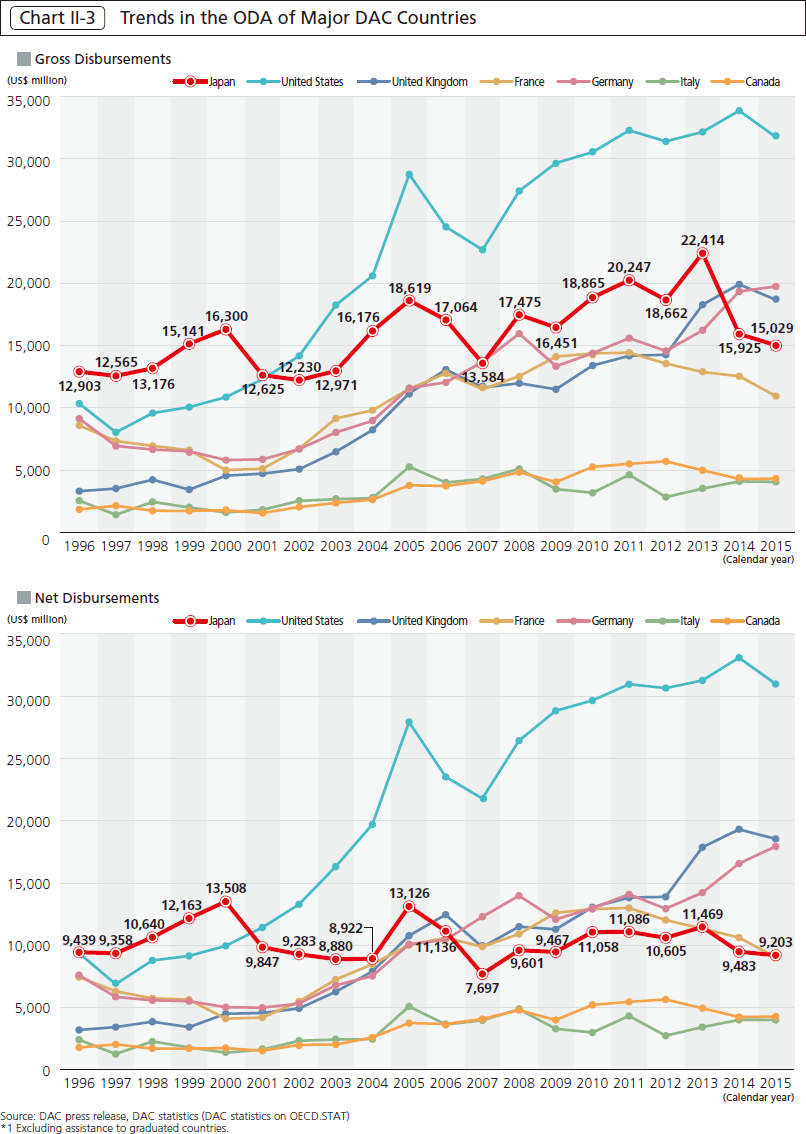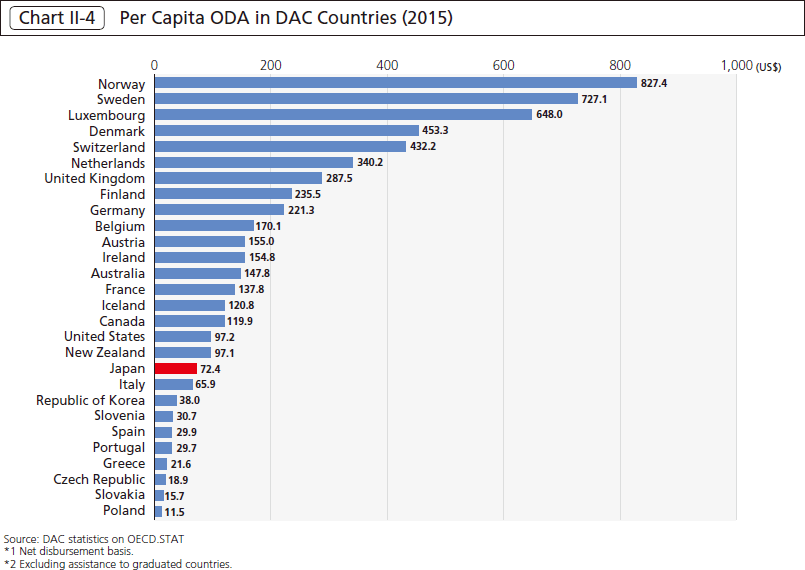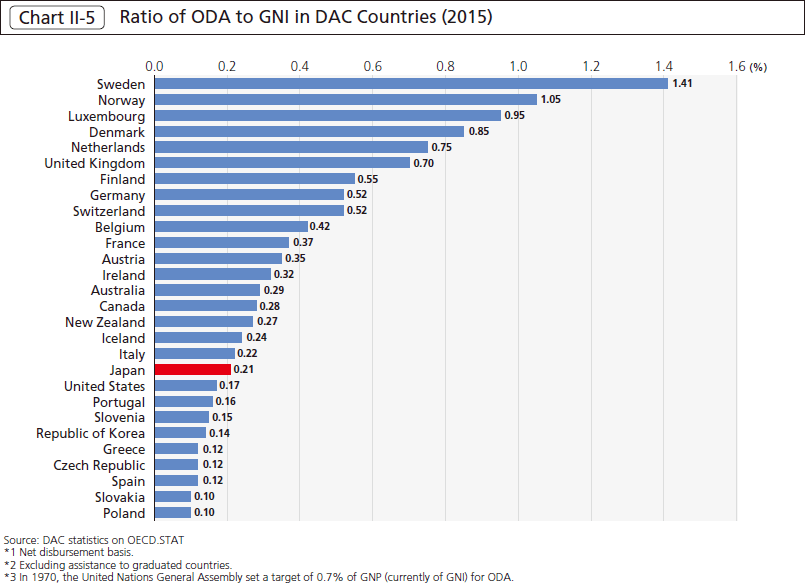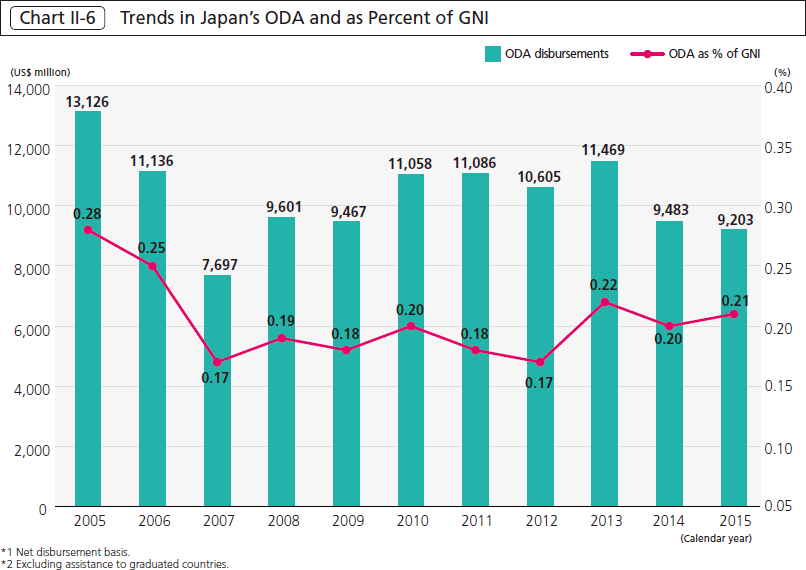Part II Development Cooperation in 2016
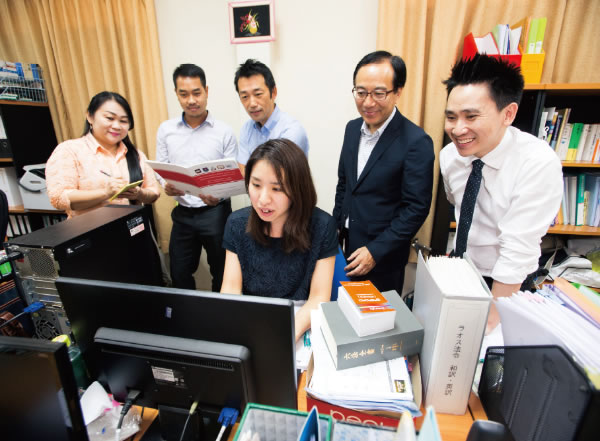
In line with opening up its economy and markets in Laos, legislative preparations and reforms are urgent priorities of this country. In Vientiane, Japanese judicial experts support the production of educational materials and administrative manuals. The experts of both countries are actively exchanging their views and enhancing the projects. (Photo: Shinichi Kuno / JICA)
Chapter 1 Japan’s Official Development Assistance in Terms of Disbursement
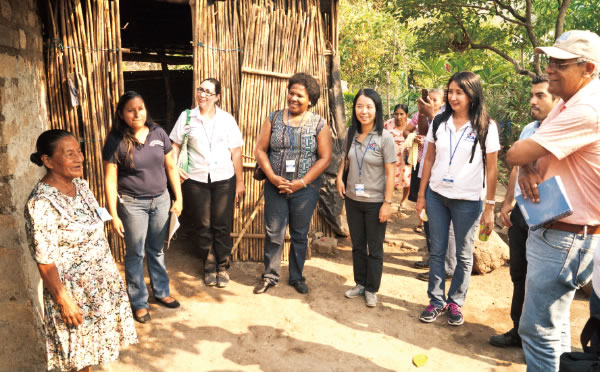
Beneficiaries of the Life Improvement Network “REDCAM” explaining to JICA and FAO officials that a family of the Gualococti village of Morazán, El Salvador, has proposed an action plan through the subject-specific training of the “Sustainable Rural Development through the Life Improvement Approach,” and that its implementation has led to the improvement of the living environment. (Photo: Ernesto Manzano / JICA)
In 2015, Japan’s gross ODA disbursements amounted to approximately $15,028.62 million (¥1,818.5 billion) and were ranked fourth in the world. Japan’s net ODA disbursements, which are gross disbursements minus repayment amounts of loan aid, (Note 1) amounted to approximately $9,202.82 million (¥1,113.6 billion) and were ranked fourth in the world. (Note 2)
<Disbursement Analysis>
Japan’s 2015 gross disbursements on a dollar basis of ODA decreased approximately 5.6% over the previous year (2014). Japan ranked in fourth place among the member countries of the Development Assistance Committee (DAC) of the Organisation for Economic Co-operation and Development (OECD), behind the United States, Germany, and the United Kingdom. In net disbursements on a dollar basis, which decreased approximately 3.0%, Japan ranked fourth behind the United States, the United Kingdom, and Germany.
ODA disbursements on a yen basis have increased compared to last year for all forms of assistance, grant aid, technical cooperation, loan aid, and multilateral aid (subscriptions and contributions to international organizations, etc.) but due to the fact that the exchange rate moved in the direction of an appreciation of the dollar and depreciation of the yen ODA disbursements on a dollar basis declined slightly compared to last year in terms of both gross disbursements and net disbursements.
A breakdown of 2015 disbursements shows that in terms of gross disbursements, bilateral ODA accounted for approximately 79.7% of overall disbursements, while ODA towards international organizations accounted for approximately 20.3%, and in terms of net disbursements, bilateral ODA accounted for approximately 66.8% of overall disbursements, while ODA towards international organizations accounted for approximately 33.2%. Bilateral ODA is expected to strengthen Japan’s relations with recipient countries. Meanwhile, ODA towards international organizations enables us to support international organizations which have expertise and political neutrality in a way that ensures the “visibility of Japanese assistance,” and thereby, also support countries and regions where direct assistance from the Japanese government is difficult to reach. Japan is making every effort to ensure that its aid is provided properly, coordinating both aid types and making flexible use of aid.
Grant aid refers to cooperation that provides grants to the government or other entities in developing regions, for the main purpose of the development of those regions. Grant aid enables prompt and flexible responses to the needs of developing countries and of the international community after large-scale disasters and other events, and achieves a significant policy effect through which the stability of the international community can be secured and Japan can exercise leadership. Technical cooperation refers to cooperation that makes use of Japan’s know-how, technologies, and experience to train human resources who will become the drivers of socio-economic development in developing countries and regions. This scheme is useful for enhancing developing countries’ technology as well as establishing and improving institutions and organizations. Furthermore, since technical cooperation is a form of aid which is materialized through interaction among people and based on people to people exchanges, it plays a major role in achieving mutual understanding at the individual level in both countries. Japan’s ODA loans provide necessary funds to developing countries and regions with concessional conditions, i.e., low interest rates and long repayment periods, so that they would not put a heavy burden on developing countries and regions. It is easier to provide large-scale assistance through Japan’s ODA loans than grant aid, making the former more effective for projects such as infrastructure development that are essential for the socioeconomic development of developing countries and regions.
Examining by the above aid scheme indicates that disbursements for bilateral ODA calculated as grant aid totaled approximately $2,622.52 million (¥317.3 billion), or approximately 17.5% of the total ODA gross disbursements. Among these grants, grant aid through international organizations accounted for approximately $1,422.85 million (¥172.2 billion), or approximately 9.5% of the total. Additionally, technical cooperation accounted for approximately $2,368.65 million (¥286.6 billion), or approximately 15.8% of the total. In terms of government loan etc., loan disbursements accounted for approximately $6,982.07 million (¥844.8 billion), or approximately 46.5% of the total gross disbursements of ODA. Net disbursements, which are loan disbursements from which repayment amounts are subtracted, accounted for approximately $1,156.27 million (¥139.9 billion).
Furthermore, following on from 2014, Japan once again provided no debt relief in 2015.
Japan’s bilateral ODA by region is as follows (in the order of gross disbursement, net disbursements [The following disbursements include disbursements to graduated countries]):
♦Asia: $6,333.08 million ($1,626.33 million)
♦Middle East and North Africa: $1,420.53 million ($863.76 million)
♦Sub-Saharan Africa: $1,866.98 million ($1,788.8 million)
♦Latin America and the Caribbean: $437.76 million (–$16.72 million)
♦Oceania: $129.11 million ($111.62 million)
♦Europe: $111.78 million ($48.12 million)
♦Assistance covering multiple regions: $1,693.88 million ($1,693.88 million)
(A negative figure indicates that the amount of loans recovered was higher than the granted amount.)
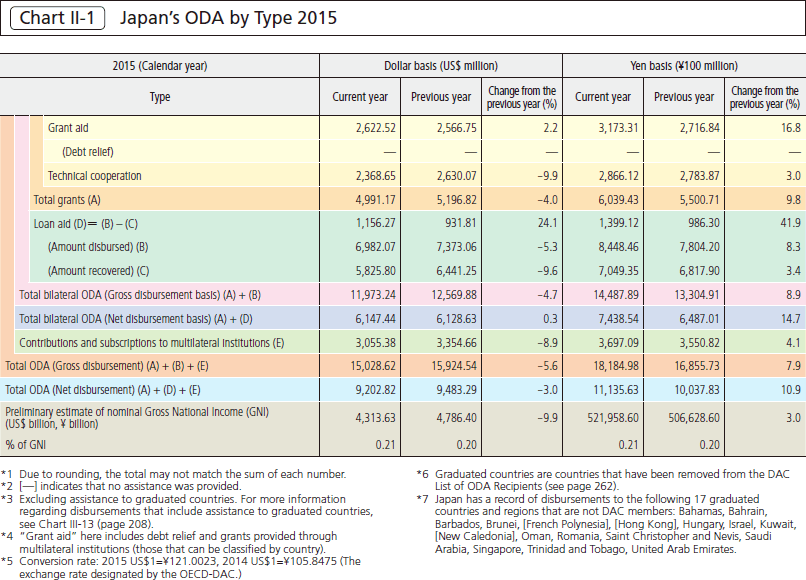
- Note 1: Gross and net disbursements are differentiated as follows: Net disbursements = gross disbursements – amount recovered (repayment amounts of government loans from recipient countries to donor countries)
Net disbursements are usually used in international comparisons of aid disbursements. - Note 2: Excluding disbursements to graduated countries. For more information regarding disbursements that include graduated countries, see Chart III-13 (page 208).
